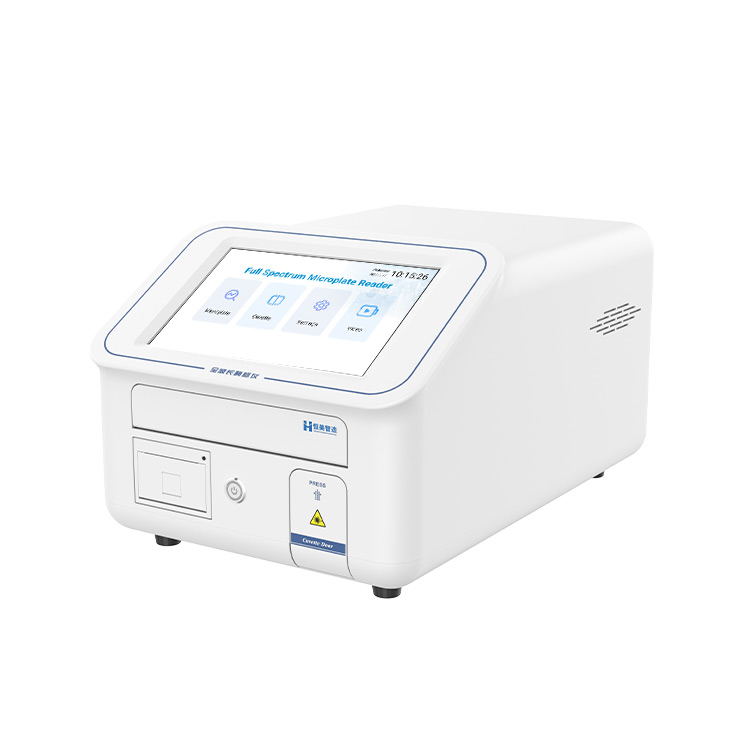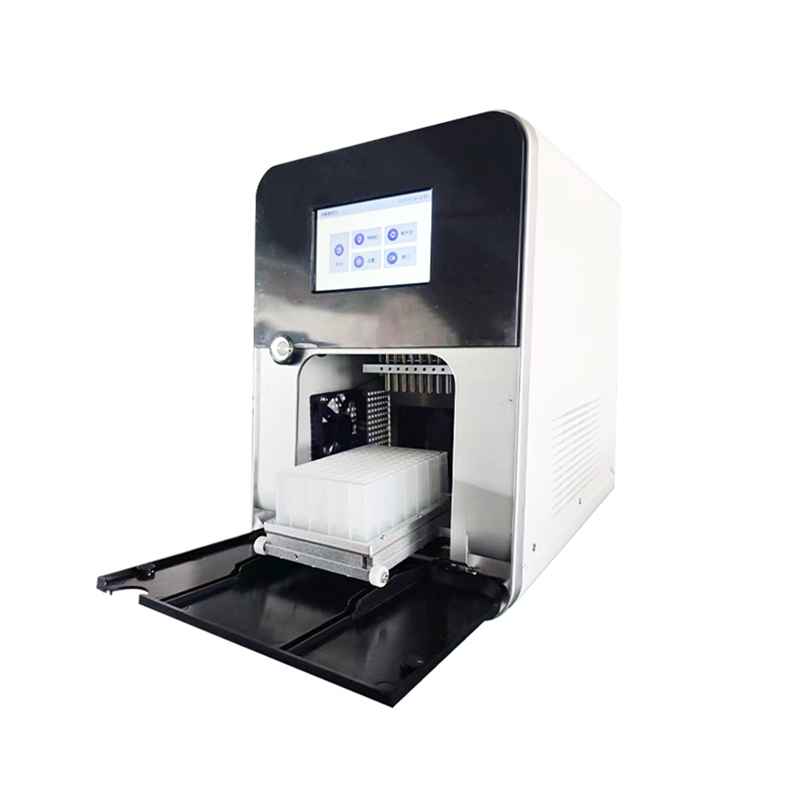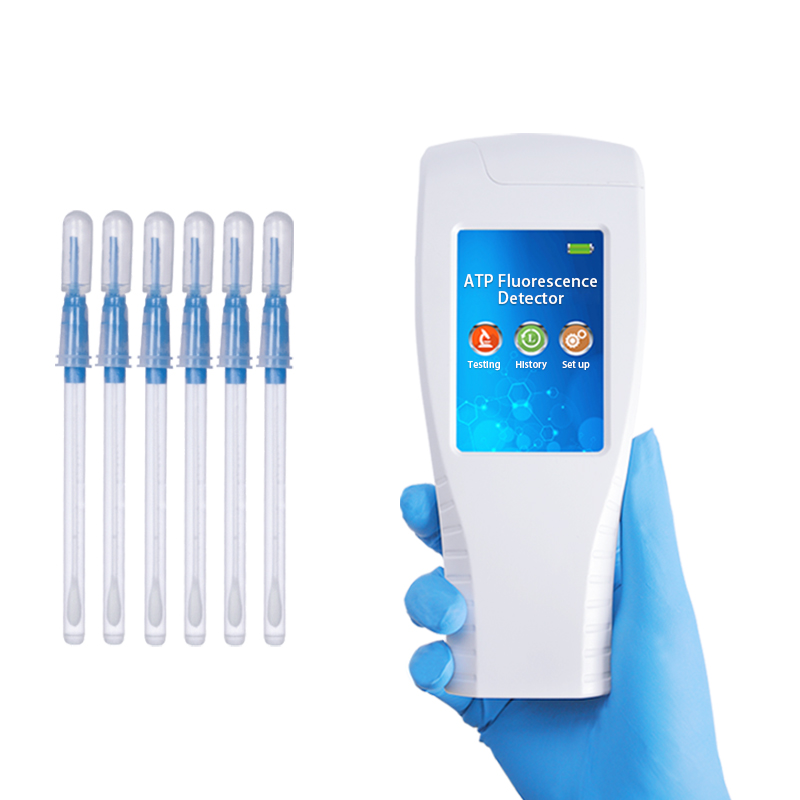The value of testing the flying ability of racing pigeons
As a long-standing and highly competitive activity, the core competitiveness of pigeon racing lies in its flying ability. The traditional breeding method relies on bloodline experience and appearance judgment, which has strong subjectivity and randomness. Modern pigeon flying ability testing technology combines genetic analysis and flight data monitoring to provide scientific and data-driven decision support for pigeon breeding, training, and competition. This plan is based on the core instruments of Hengmei Electronic Technology, combined with intelligent monitoring equipment and data analysis platform, to construct a full chain solution covering "gene potential evaluation - flight performance monitoring - training and competition strategy optimization".

Genetic Testing Solutions: Hengmei HM-P32 as the Core
The HM-P32 racing pigeon flight ability tester developed by Hengmei Electronic Technology is the core equipment of the entire solution. Based on real-time fluorescence quantitative PCR technology, it evaluates the innate flight potential of racing pigeons through precise analysis of key gene loci. This instrument transforms the vague "bloodline advantage" in traditional breeding into quantifiable genetic indicators, providing scientific basis for breeding.
1、Core testing indicators
HM-P32 can simultaneously identify multiple genetic markers that affect flight ability:
Homecoming ability (DRD4 gene): Evaluate the spatial positioning and homing navigation ability of racing pigeons to reduce the rate of competition loss.
Flight endurance (LDHA gene): reflects the muscle's ability to resist lactate and the potential for sustained flight.
Circadian rhythm (CRY1 gene): Analyze the adaptability of time rhythm and its impact on competition performance at different time periods.
Navigation ability (geomagnetic induction related genes): Determine the efficiency of geomagnetic field utilization.
Auxiliary indicators: gender identification, wing structure genes (F-KER), intelligence genes (CASK), etc.
2、Technical advantages
Hengmei HM-P32 has significant technological leadership in the field of genetic testing:
Precision temperature control system:
We use custom Peltier modules from MARLOW in the United States, with a maximum heating and cooling rate of 7 ℃/second and a temperature control accuracy of ± 0.01 ℃, ensuring efficient and stable gene amplification. The lifespan of semiconductor modules can reach millions of cycles, significantly reducing long-term usage costs.
Advanced Optical Inspection:
Four channel independent fluorescence detection system, supporting probes such as FAM/SYBR Green, HEX/VIC, ROX/Texas Red, CY5, etc. Adopting 13S rapid lighting technology, automatically adjusting the fluorescence background, improving the signal-to-noise ratio by 30%, and achieving sensitivity at the level of single gene copy. Maintenance free LED light source avoids the trouble of frequent replacement of light sources.
Portable integrated design:
The volume is only 235 × 385 × 175mm, the weight is 5.8kg, and it has a built-in 10 inch touch screen that supports field and pigeon house on-site inspection. Compatible with 0.2mL single tube and eight tube, it can complete 32 sample analyses in a single run, meeting the needs of batch screening.
Intelligent analysis system:
Embedded genetic typing software automatically generates detection reports containing genetic potential scores, pigeon pairing recommendations, training sensitivity, and other parameters. Support data export and cloud backup, making it easy to establish a pigeon gene database.
3、Implementation Process
Sampling: Collecting blood or feather samples from racing pigeons (non-invasive)
Preprocessing: Extract DNA and add it to the PCR reaction system
Machine detection: Run quantitative PCR program (approximately 1.5 hours)
Report generation: Software automatically outputs genotyping results and breeding recommendations
Flight Data Monitoring Solutions
The genetic potential needs to be verified through actual flight performance. This scheme integrates IoT monitoring equipment to collect multidimensional parameters of the racing pigeon flight process. Although this part is not a proprietary product of Hengmei, it forms a key complementarity with genetic data.
1、Wearable monitoring devices
Positioning and trajectory module:
GPS/Beidou dual-mode positioning (accuracy ± 1 meter), recording flight path, real-time speed, and net flight distance (eliminating wind speed interference). Analyze yaw rate and shortcut recognition ability through trajectory replay.
Physiological parameter module:
Integrated heart rate sensor and temperature monitor, real-time tracking of metabolic status. Combining lactate threshold model to warn muscle fatigue and avoid overtraining.
Motion Mechanics Sensor:
The nine axis inertial unit (accelerometer+gyroscope+magnetometer) captures the flapping frequency, amplitude, and steering angle to evaluate flight efficiency.
The device adopts an ultra lightweight design (<2 grams), with a flexible circuit board attached to the pigeon back, and a battery life of up to 72 hours. Data is transmitted back through LoRa/4G.
2、Ground Base Stations and Platforms
The base station deployed in the pigeon house has data reception, storage, and preliminary analysis functions, supporting the following applications:
Training intensity optimization: dynamically adjust the training distance and intensity based on the real-time heart rate and speed correlation curve.
Homing induction enhancement: sending audio/magnetic pulse signals in adverse weather conditions to assist racing pigeons in navigation.
Abnormal behavior warning: AI recognizes movements such as hovering and sudden drops to indicate the risk of injury or illness.
Data Platform and Intelligent Analysis
1、Data Integration Architecture
The genetic data (output from HM-P32) is integrated with flight monitoring data on a cloud platform to construct a "gene phenotype profile" for each racing pigeon. This file is continuously updated, covering flight records from genetic screening of young pigeons to retirement.
2、AI Analysis Model
Potential prediction model:
Based on machine learning algorithms such as random forests and neural networks, gene markers (such as DRD4 high expression type) are associated with actual flight performance (speed stability, headwind endurance) to predict short haul explosive or long-distance endurance racing pigeons.
Digital twin simulation:
Reproduce the flight process of racing pigeons in a virtual environment, simulate their performance under different climates (headwinds, rainfall) or terrains, and assist in the development of competition strategies.
Breeding value evaluation:
Quantify the genetic contribution rate of breeding pigeons through multi generational gene expression association analysis. For example, offspring of breeding pigeons carrying the LDHA-A gene have an average speed increase of 12% in an 800 kilometer race.
3、Breeding Optimization System
The platform provides scientific pairing advice to avoid inbreeding degeneration. For example:
Male pigeons with excellent homing ability (DRD4-AA type) but moderate endurance (LDHA-AG type) are preferred to be matched with female pigeons with outstanding endurance (LDHA-AA type).
For racing pigeons sensitive to the CRY1 gene (with strong circadian rhythms), it is recommended to avoid night racing.
Typical Application Scenarios
1、Breeding and Pairing Optimization of Pigeons
Genetic screening: Use Hengmei HM-P32 to genotype young pigeons and eliminate individuals carrying congenital defect genes.
Pairing simulation: Input expected traits (such as "high speed+stress resistance"), and the platform recommends the best pigeon breeding combination.
Descendants verification: Evaluate the pairing effect through flight monitoring data and continuously optimize model parameters.
2、Personalized Training Intensity Setting
Endurance racing pigeon (LDHA-AA type): adopts long-distance uniform training (>100 kilometers), with heart rate controlled in the range of 180-220bpm.
Speed type racing pigeon (MSTN high expression type): focuses on interval training, with mandatory rest after short sprints.
3、Scientific formulation of competition strategies
Weather adaptation: CRY1 gene sensitive racing pigeons avoid participating in rainy weather; GSR high expression type is given priority in participating in adverse weather events.
Group collaboration: Formation based on genetic differences in navigation ability, with strong geomagnetic induction for navigation.
4、Early Warning for Health Management
Training injury prevention: Abnormal flapping frequency (accelerometer data) indicates muscle strain and triggers rest instructions.
Stress level monitoring: Pre competition cortisol testing (HM-P32 extended function) combined with heart rate variability to eliminate individuals with high stress levels.
Implementation Steps Suggestions
Gene filing stage (January February)
Use Hengmei HM-P32 for genetic testing of all greenhouse racing pigeons, establish a database, and eliminate individuals carrying severely defective genes.
Flight monitoring phase (months 3-4)
Wear monitoring equipment for potential breeding pigeons and collect basic flight data (daily training 50-200 kilometers).
Data analysis phase (May)
The platform generates an analysis report, including a pigeon pairing score table, individual training weakness tips, and suggestions for competition types.
Feedback optimization phase (ongoing)
Dynamically adjust the breeding model based on offspring gene expression and competition results, and update monitoring algorithm parameters every quarter.
This plan utilizes the core advantages of the Hengmei HM-P32 gene detector, combined with intelligent monitoring and AI analysis, to achieve quantifiable, predictable, and optimized flight capabilities of racing pigeons. Not only does it transform traditional experience into scientific indicators, but it also achieves significant results in improving breeding efficiency (shortening the breeding cycle by 40%), increasing competition winning rate (increasing homing rate by 25%), and reducing training damage (reducing losses caused by overtraining by 30%), promoting the pigeon racing industry into the era of precision breeding.
Article address:https://www.molecularbio.cn/solu/28.html













